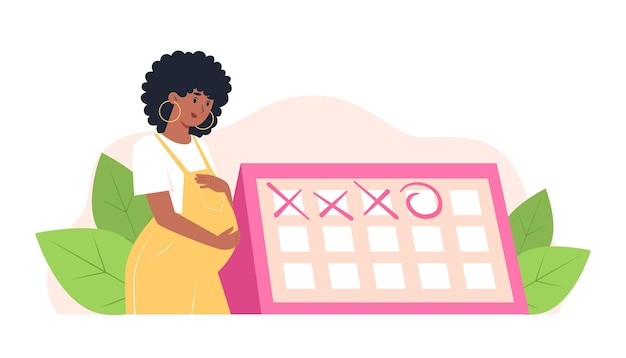Maternity Leave in England

Maternity leave is a crucial aspect of work-life balance for expectant mothers in England. It provides the much-needed time off to recover from childbirth and bond with their newborns. In this comprehensive guide, we will explore the nuances of maternity leave in England, including eligibility criteria, types of leave, duration, pay, rights and protections, application procedures, returning to work, support resources, challenges, a global perspective, and the viewpoint of employers.
What is Maternity Leave?
Maternity leave is a legally mandated period of absence from work for pregnant employees in England. It is designed to allow expectant mothers to prepare for childbirth, recover, and care for their newborns. This crucial time off ensures the well-being of both the mother and child.
Eligibility Criteria
To be eligible for maternity leave in England, employees must meet specific criteria. Generally, an employee should:
- Be an expectant mother.
- Provide notice to the employer.
- Have a contract of employment.
Types of Maternity Leave
In England, maternity leave is divided into two categories: Ordinary Maternity Leave (OML) and Additional Maternity Leave (AML).
Ordinary Maternity Leave (OML)
OML lasts for 26 weeks. During this period, employees maintain their contractual rights, except for pay. OML is available to all eligible employees.
Additional Maternity Leave (AML)
AML extends up to 26 weeks beyond OML. While the basic job security remains, some terms and conditions may vary. Employees can opt for AML if they wish to take the full year off.
Duration and Pay
Length of Maternity Leave
In total, maternity leave in England can last for up to 52 weeks. This includes 26 weeks of OML and an additional 26 weeks of AML if desired.
Statutory Maternity Pay
Statutory Maternity Pay (SMP) is a crucial aspect of maternity leave. It provides financial support to eligible employees. SMP is payable for up to 39 weeks. The amount received may vary, so it’s essential to check the government guidelines.
Rights and Protections
Job Security
One of the primary concerns for expectant mothers is job security. During maternity leave, employees have specific rights and protections, ensuring they can return to their job after the leave.
Benefits and Pension Contributions
During maternity leave, employees continue to receive benefits and pension contributions, ensuring financial stability.
Maternity Leave Application Process
Applying for maternity leave is a straightforward process. Employees should inform their employers at least 15 weeks before the expected due date. This allows employers to make necessary arrangements.
Returning to Work
Returning to work after maternity leave can be challenging. Employers are required to provide a suitable role upon return. Flexible working options are also available to assist employees in maintaining a work-life balance.
Support and Resources
Support Groups
Many support groups and organizations offer guidance and assistance to expectant mothers. Joining such groups can help individuals navigate the challenges of maternity leave.
Employer Resources
Employers often provide resources and support to employees going on maternity leave. This includes information on benefits, workplace policies, and available resources.
Maternity Leave Challenges
While maternity leave is a valuable benefit, it does come with its set of challenges. Juggling work, motherhood, and personal life can be demanding. It’s crucial for mothers to seek support and maintain open communication with their employers.
Maternity Leave in England vs. Other Countries
Maternity leave policies vary across the globe. England offers a comprehensive maternity leave package, but it’s essential to understand how it compares to other nations to make informed decisions.
Employer’s Perspective
Employers play a vital role in facilitating maternity leave for their employees. Understanding their obligations and responsibilities is crucial to ensuring a smooth transition for expectant mothers.
Conclusion
Maternity leave in England is a valuable resource that allows expectant mothers to focus on their health, bonding with their newborns, and maintaining a work-life balance. With legal protections and financial support in place, mothers can navigate this crucial phase of life with confidence.
Frequently Asked Questions
1. How long can I take maternity leave in England?
In England, you can take up to 52 weeks of maternity leave, which includes 26 weeks of Ordinary Maternity Leave (OML) and an additional 26 weeks of Additional Maternity Leave (AML).
2. What is Statutory Maternity Pay (SMP)?
Statutory Maternity Pay (SMP) is a financial benefit provided to eligible employees during their maternity leave. It is payable for up to 39 weeks, but the amount received may vary.
3. What are my rights during maternity leave in England?
During maternity leave, you have the right to job security and protection of your benefits and pension contributions.
4. How do I apply for maternity leave in England?
To apply for maternity leave, inform your employer at least 15 weeks before your expected due date. This allows them to make necessary arrangements.
5. Can I work part-time or with flexible hours during maternity leave?
Yes, you can discuss flexible working options with your employer when returning to work after maternity leave. This allows you to achieve a better work-life balance.
